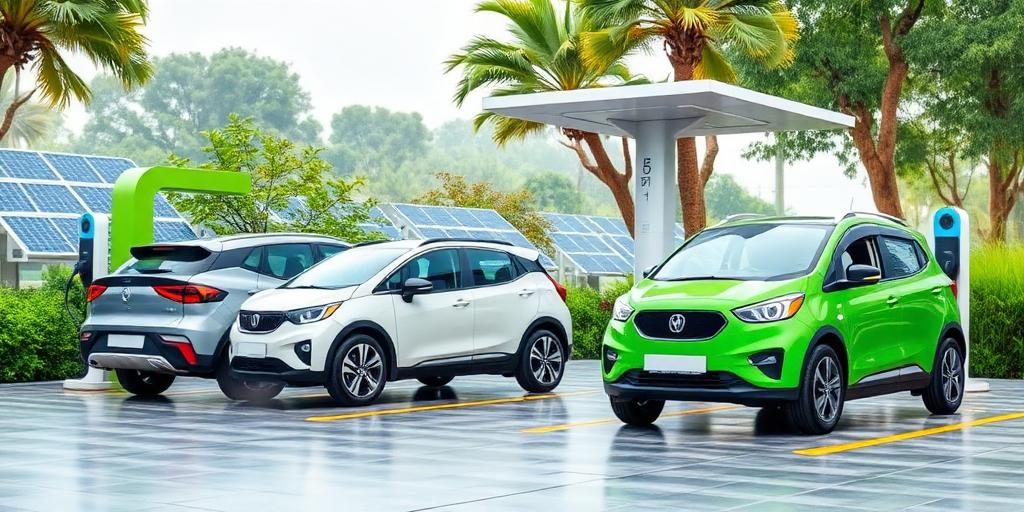Sarkari Yojana for E-Vehicle Adoption in 2025: A Comprehensive Overview
In 2025, the Indian government is poised to implement a robust set of schemes, known as Sarkari Yojana, aimed at accelerating the adoption of electric vehicles (EVs) across the nation. These initiatives are designed to address critical barriers to EV adoption, including high initial costs, range anxiety, and lack of charging infrastructure. This article provides an in-depth look at the key components of the upcoming Yojana, offering valuable insights for consumers, manufacturers, and stakeholders in the automotive industry.
Key Objectives and Components
The Sarkari Yojana for E-Vehicle Adoption in 2025 is structured around several core objectives:
- Financial Incentives: Providing direct subsidies and tax benefits to reduce the upfront cost of EVs. This includes purchase subsidies, reduced road tax, and income tax deductions for EV buyers.
- Charging Infrastructure Development: Expanding the network of public charging stations through government funding and private sector partnerships. The plan includes establishing charging stations along major highways, in urban centers, and at public parking facilities.
- Manufacturing Boost: Encouraging domestic manufacturing of EVs and EV components through production-linked incentive (PLI) schemes. This aims to reduce reliance on imports and create a self-reliant EV ecosystem.
- Awareness and Education: Launching nationwide campaigns to educate the public about the benefits of EVs and dispel common misconceptions. This includes showcasing the environmental and economic advantages of EV adoption.
- Research and Development: Investing in R&D to improve battery technology, charging efficiency, and overall EV performance. This will foster innovation and ensure India remains competitive in the global EV market.
Financial Incentives: Deep Dive
The financial incentives under the 2025 Yojana are designed to make EVs more accessible to a wider range of consumers. Key highlights include:
- Purchase Subsidies: Direct subsidies will be provided based on the battery capacity of the EV, with higher subsidies for vehicles with larger batteries. This aims to incentivize the adoption of EVs with longer ranges.
- Tax Benefits: Reduced road tax and registration fees for EVs will further lower the total cost of ownership. Income tax deductions will also be available for individuals purchasing EVs for personal use.
- Scrappage Policy: Incentives will be offered for scrapping older, polluting vehicles and replacing them with new EVs. This will help to reduce air pollution and promote the adoption of cleaner vehicles.
Charging Infrastructure: A National Priority
The expansion of charging infrastructure is a critical component of the Yojana. The government plans to:
- Public Charging Stations: Establish a network of public charging stations across the country, with a focus on high-traffic areas and major transportation routes. These stations will offer both slow and fast charging options to accommodate different EV models.
- Private Sector Participation: Encourage private companies to invest in charging infrastructure through incentives such as land allocation, tax breaks, and streamlined permitting processes.
- Standardization: Ensure that all charging stations adhere to common standards to ensure compatibility and interoperability across different EV models.
Impact and Outlook
The Sarkari Yojana for E-Vehicle Adoption in 2025 is expected to have a significant impact on the Indian automotive industry and the environment. By reducing the cost of EVs, expanding charging infrastructure, and promoting domestic manufacturing, the Yojana aims to:
- Increase EV Sales: Significantly increase the number of EVs on Indian roads, contributing to a reduction in air pollution and greenhouse gas emissions.
- Create Jobs: Generate new employment opportunities in the EV manufacturing, charging infrastructure, and related sectors.
- Reduce Oil Dependence: Lower India's dependence on imported oil, enhancing energy security and reducing the trade deficit.
The successful implementation of the Yojana will require close collaboration between the government, industry, and consumers. By working together, India can achieve its ambitious goals for EV adoption and create a cleaner, more sustainable future.
Conclusion
The Sarkari Yojana for E-Vehicle Adoption in 2025 represents a significant step towards promoting sustainable transportation in India. With its comprehensive approach, the Yojana addresses key barriers to EV adoption and lays the foundation for a thriving EV ecosystem. Stakeholders across the automotive industry should closely monitor the implementation of these schemes and adapt their strategies to capitalize on the opportunities they present. The future of mobility in India is electric, and the 2025 Yojana is set to drive this transformation forward.









